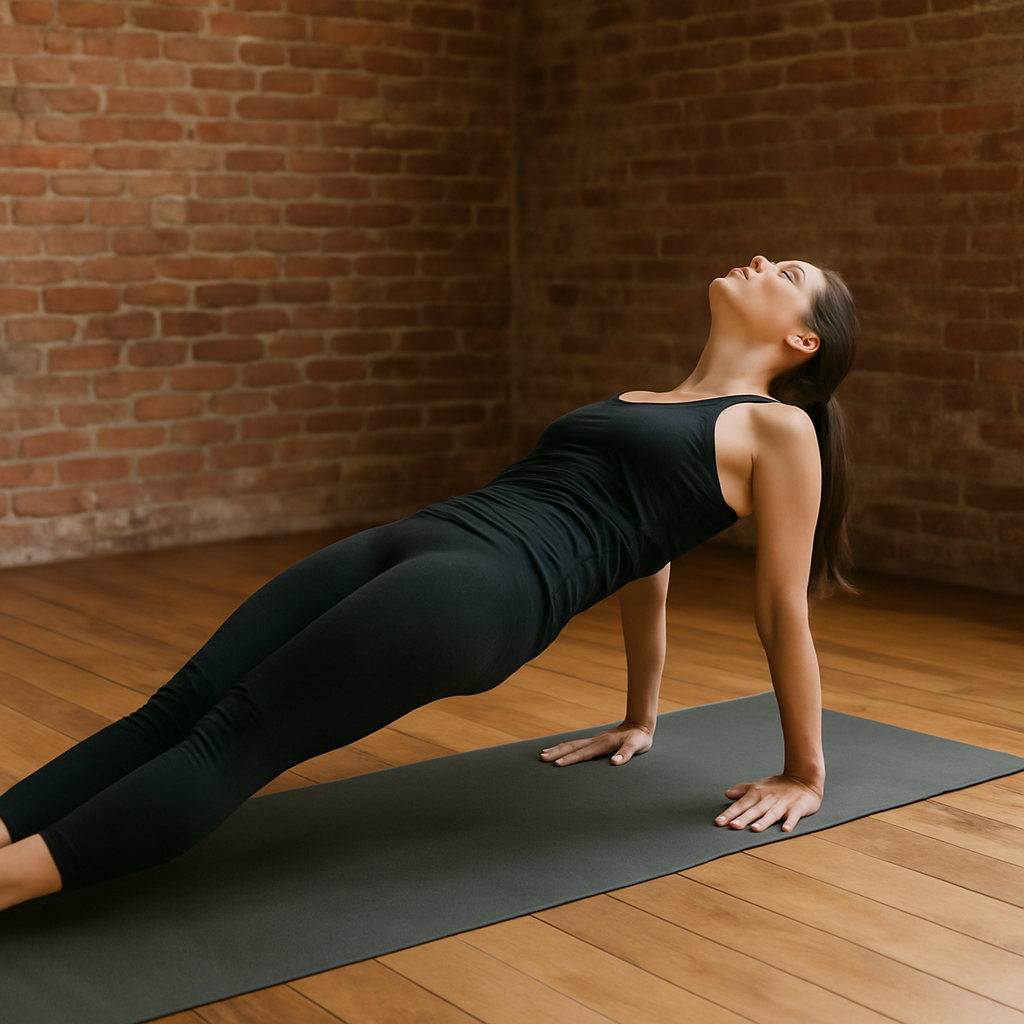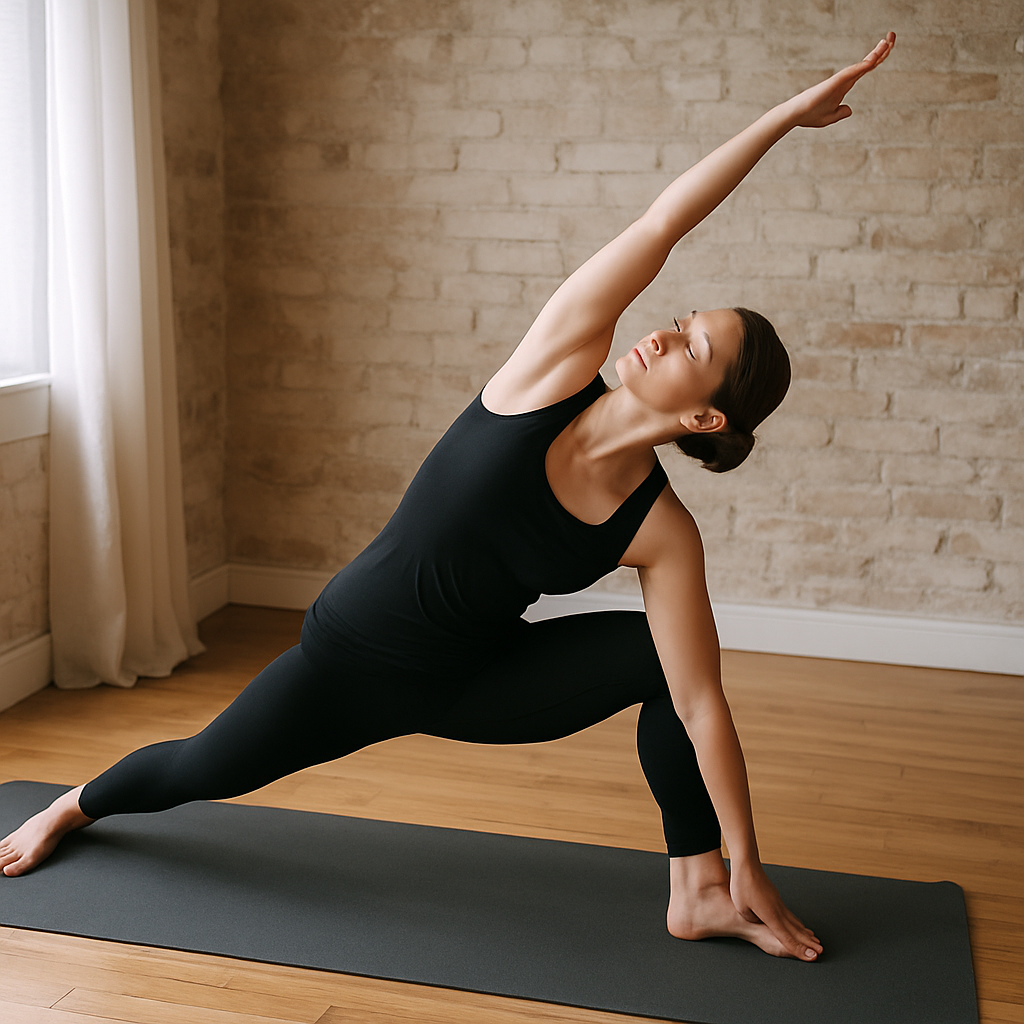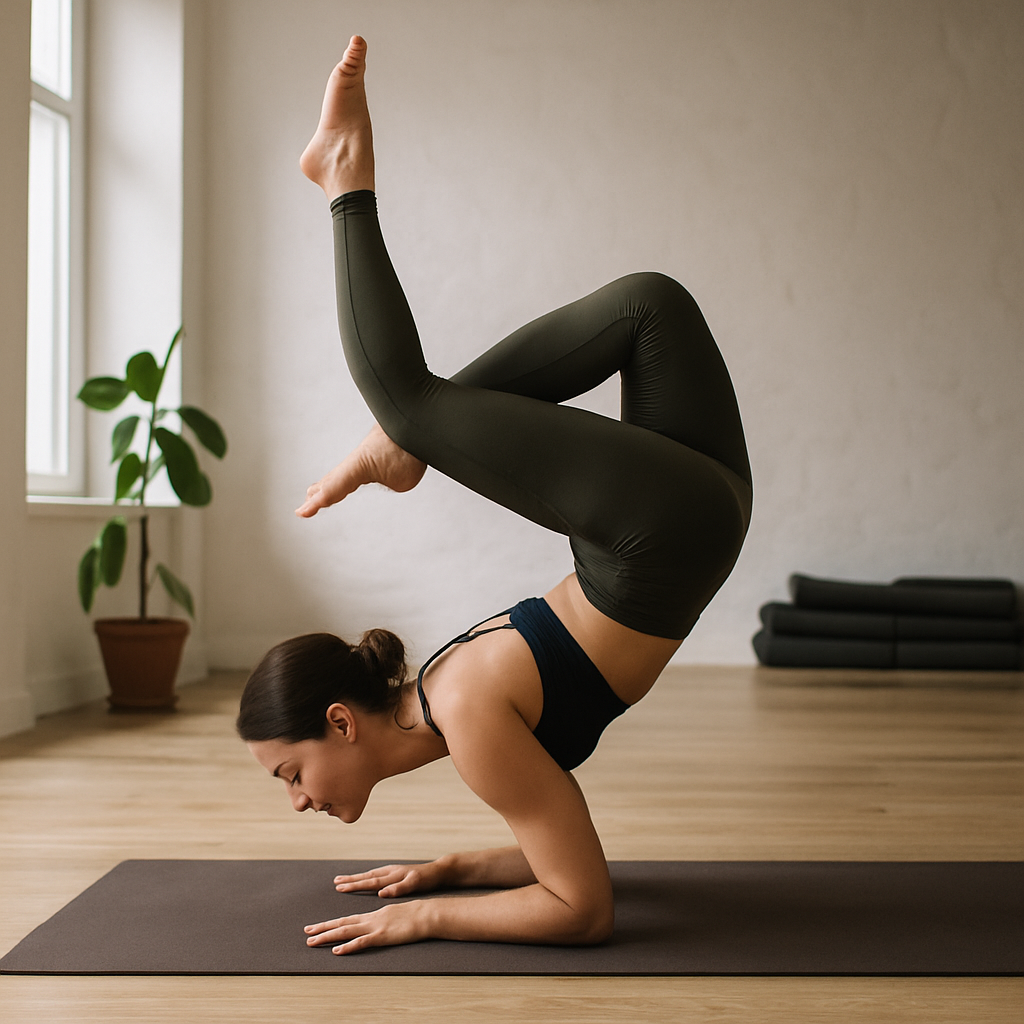Ask Ayurvedic doctor a question and get a consultation online on the problem of your concern in a free or paid mode. More than 2,000 experienced doctors work and wait for your questions on our site and help users to solve their health problems every day.
Shop Now in Our Store
What Is Ashtanga Yoga: Meaning, Structure, and Yogic Benefits

When most people hear "ashtanga yoga," they picture an intense, sweaty, athletic practice. And sure, that's part of it. But what is ashtanga yoga really? What’s the ashtanga yoga meaning beyond the poses and the flow? It’s more than just a workout—this practice is rooted in deep philosophy, discipline, and ancient wisdom. From the meaning of ashtanga yoga to the spiritual framework behind it, there’s a whole universe to explore. Whether you’re brand new or have been practicing for years, understanding the structure and origin of ashtanga yoga can transform the way you approach your mat—and yourself.
In this article, we'll explain ashtanga yoga step by step, dive into its benefits, its link with Ayurveda, and why it’s still so popular today. Stick around to find out the meaning behind the movement.
What Is Ashtanga Yoga and Its Meaning in Sanskrit
Ashtanga Meaning and Origin
Let’s start at the root: the term Ashtanga comes from two Sanskrit words—ashta, meaning “eight,” and anga, meaning “limb” or “part.” So, the literal ashtanga yoga meaning is “eight-limbed yoga.” This isn’t just a poetic phrase—it refers to a comprehensive system laid out in the ancient Yoga Sutras of Patanjali. These eight limbs aren’t just physical postures but a full spiritual roadmap.
What is ashtanga yoga, then? It’s not just a style of yoga. It’s a discipline, a lifestyle, and in many cases, a spiritual path. While today it's best known for the series of intense, flowing postures (or asanas), the original framework includes ethics, breathwork, concentration, and meditation.
Back in the day (we’re talkin’ thousands of years ago), ashtanga yoga wasn’t about getting flexible. It was about getting free—mentally, emotionally, and spiritually. These eight limbs were seen as the path to samadhi, or enlightenment.
Who Is the Father of Ashtanga Yoga?
If you’ve been to a modern yoga class and heard the word “ashtanga,” you’re most likely encountering the style popularized by Sri K. Pattabhi Jois in the 20th century. He’s often called the "father of ashtanga yoga," at least in the modern context. Jois learned this system from his teacher Krishnamacharya, who is sometimes referred to as the grandfather of modern yoga.
Pattabhi Jois systematized the flowing sequences we know today into what’s now considered "classical ashtanga yoga." This includes the Primary Series, Intermediate Series, and Advanced Series, each one getting more challenging and deeper than the last.
But while Jois brought this practice to the West, he always emphasized that the roots went much deeper. He was clear: ashtanga yoga isn’t just about asanas. It’s about discipline, breath, and focus.

Ashtanga Yoga in Ayurveda and Spiritual Practice
Here’s where it gets interesting. While ashtanga yoga is often viewed through a physical lens, it also connects deeply with Ayurveda, the traditional Indian system of medicine. In fact, ashtanga ayurveda is one of the eight branches of Ayurveda, and it includes yoga as a method for balancing body and mind.
Ashtanga yoga, when practiced mindfully, can help balance doshas—the energy types in Ayurveda. For instance, a fiery pitta personality might benefit from the calming rhythm of breath and movement, while an airy vata type might find grounding in the structured flow.
That said, not every yoga ashtanga session is therapeutic if done carelessly. It can be intense. Injuries happen if practitioners rush into advanced ashtanga yoga poses without proper guidance. So be gentle. Be consistent. And listen to your body more than your ego.
The Eight Limbs of Ashtanga Yoga
To really explain ashtanga yoga, you’ve gotta look beyond the sweat and the poses. At its core, ashtanga yoga is built on the Eight Limbs, a step-by-step guide to spiritual awakening described in the Yoga Sutras of Patanjali. Think of these limbs as the staircase from chaos to calm, from distraction to deep focus.
Step-by-Step Breakdown of the Limbs
-
Yama – Ethical restraints
These are basically your don’ts: don’t harm, don’t lie, don’t steal, etc. They’re kind of like moral guidelines to keep your energy clean. -
Niyama – Personal observances
These are your do’s: cleanliness, contentment, discipline, and self-reflection. A lot of inner work happens here, believe it or not. -
Asana – Physical postures
This is where most people think ashtanga starts. But it’s just limb three. Practicing ashtanga yoga asanas helps prepare the body for stillness and deeper internal practice. -
Pranayama – Breath control
Ever heard a teacher say "inhale deeply" in class? That’s pranayama. It’s not just breathing—it’s training the life force. Like, literally. -
Pratyahara – Withdrawal of senses
This one’s tricky. It's the art of turning your senses inward. Think of it as tuning out the noise so you can hear what’s inside. -
Dharana – Concentration
Now we're talking razor-sharp focus. Ever tried to meditate and your mind wandered to your grocery list? Yeah, dharana helps you stop that. -
Dhyana – Meditation
The uninterrupted flow of concentration. A bit like watching a candle flame until it becomes part of you. Not easy, but magical. -
Samadhi – Enlightenment or bliss
The final goal. Transcendence. It’s when you merge with the infinite, or at least get a glimpse of it.
How They Guide Yogic Discipline
Each limb of ashtanga yoga builds on the one before it. You can’t jump to meditation if you haven’t learned how to sit still. And you can’t sit still if your body’s constantly uncomfortable or your mind is spinning in every direction. The structure here is intentional. It's not just spiritual mumbo-jumbo—it’s practical, even scientific in its own way.
Many people come for the physical challenge but stay for the transformation. The ashtanga yoga steps create discipline and mental clarity, helping you not just stretch your hamstrings, but stretch your awareness too.

Common Ashtanga Yoga Poses and Asanas
Now, let’s talk about the part that most students are familiar with: ashtanga yoga poses. These are set sequences, which means every class follows the same order of asanas (postures). Some find that boring. Others? They find it grounding. Predictable. Meditative.
The most well-known sequence is the Primary Series, also called Yoga Chikitsa, or “yoga therapy.” It focuses on detoxifying and aligning the body. Here are some key ashtanga yoga asanas:
-
Surya Namaskara A & B (Sun Salutations) – The warm-up for all series. Done in a rhythm, linked with breath.
-
Padangusthasana – A forward fold with big toe grip. Great for hamstrings, not so great if you rushed breakfast.
-
Utthita Trikonasana (Triangle Pose) – Builds strength and balance.
-
Marichyasana A-D – Deep twists and binds. Kind of like a human pretzel, but oddly satisfying.
As you move through the practice, it feels like a dance. Not a flashy performance, but an inner one. The rhythm of the breath (called ujjayi) guides every movement. It gets loud. It’s like Darth Vader in a good way.
Benefits of Ashtanga Yoga for Body and Mind
So, what are the actual benefits of ashtanga yoga? Besides looking like a bendy ninja on Instagram, there’s some real substance here.
Physically, ashtanga builds serious strength, endurance, and flexibility. Unlike some gentler forms of yoga, this style is dynamic. You’ll sweat—probably a lot. Over time, it tones muscles, increases joint mobility, and improves posture. Your spine feels taller. Your core? On fire (in a good way).
Mentally? That’s where the magic happens. Practicing ashtanga regularly sharpens focus, reduces stress, and builds discipline. The structured sequences train the mind to stay, even when things get uncomfortable. And that spills over into daily life: suddenly, you’re more patient at traffic lights, more mindful in conversations, maybe even less reactive when your cat knocks a glass off the counter for the 17th time.
Emotional resilience, improved sleep, better digestion—all are often reported by dedicated practitioners. That’s why many say the real ashtanga yoga benefits aren’t physical. They’re transformational.

Types of Ashtanga Yoga and Their Practice Focus
When people ask about the types of ashtanga yoga, they’re usually referring to the different series in the practice. Unlike some yoga styles that mix things up, ashtanga follows a specific progression. You “earn” your way to the next level. Here’s a quick breakdown:
-
Primary Series (Yoga Chikitsa) – Focuses on detoxifying and aligning the body. Good for beginners (with patience).
-
Intermediate Series (Nadi Shodhana) – Cleanses the nervous system. More demanding, with deeper backbends.
-
Advanced Series (Sthira Bhaga) – Builds strength and grace. Not for the faint of heart (or tight of hamstring).
There’s also Mysore style, where students practice the sequence at their own pace in a group setting with a teacher assisting. And Led class, where everyone follows the teacher’s counted vinyasa. Both are amazing in different ways.
If you’re looking to understand yoga ashtanga on a deeper level, working through these series over time helps you track not just physical growth, but emotional and mental shifts too.
How to Start Practicing Ashtanga Yoga Safely
If you're thinking of jumping in, hold up a sec. Ashtanga can be intense. It’s not just stretching—it's structured. Start slow. Respect your limits.
Here’s how to get going:
-
Find a qualified teacher. Seriously. Proper instruction matters. They’ll help you avoid injury and build solid habits.
-
Don’t skip breath work. Ujjayi breath keeps you steady, especially when things get hard.
-
Learn the foundation first. The ashtanga yoga steps are built like a pyramid—if your base is shaky, everything else tumbles.
-
Modify as needed. Can’t bind? Use a strap. Knee hurting in lotus? Skip it. Yoga isn't about pushing—it’s about practicing.
-
Be consistent. It’s better to practice 3 days a week with focus than 7 days with burnout.
Conclusion
Now that you know the meaning of ashtanga yoga, its steps, poses, and deep benefits, you can see—it’s more than just a style. It’s a life practice. From its roots in ancient philosophy to its sweaty sequences today, ashtanga yoga offers something rich, disciplined, and deeply transformational.
If you’ve ever wondered “what is ashtanga yoga?”—now you’ve got the full picture. And maybe a little itch to unroll your mat and try it yourself.
Ready to dive in? Start small, stay curious, and don’t forget to breathe.
FAQs
Is Ashtanga the hardest yoga?
Well, it depends. Many people say yes—it’s physically demanding and mentally rigorous. But “hard” is relative. If you like structure, sweat, and a challenge, you might actually love it.
How is Ashtanga yoga different from other yoga?
Unlike vinyasa or hatha yoga, ashtanga follows a fixed sequence. It’s methodical. Repetitive. But that’s also its strength. It allows you to go deep, refine your practice, and observe your progress over time.
Is Ashtanga ok for beginners?
Absolutely—but with guidance. It can feel overwhelming at first, but with a good teacher and a bit of patience, beginners can thrive in ashtanga. Just don’t expect to nail every pose on day one. Or year one. And that’s totally okay.
Did you find this helpful?
Share it with a friend—or someone who thinks yoga is just stretching. Let's spread the real story of ashtanga yoga far and wide.
This article is checked by the current qualified Dr Sujal Patil and can be considered a reliable source of information for users of the site.

